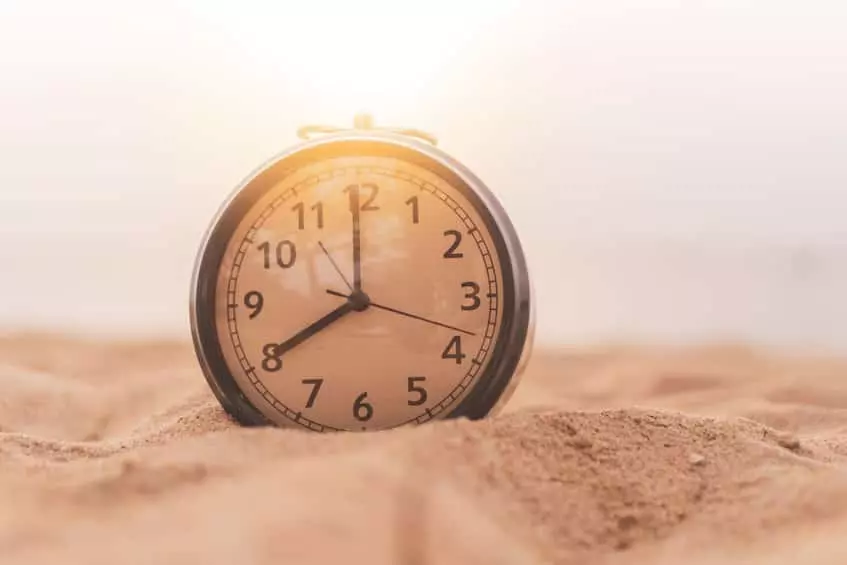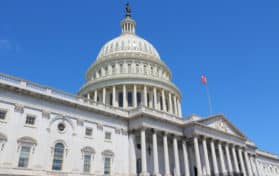
Take a look around the internet when the time changes in November and March, and readers are likely to find many complaining about the adjustments physically associated with the change. While most individuals enjoy the “fall back” time change (who wouldn’t enjoy an extra hour of sleep?), those who “spring forward,” losing an hour of sleep, lament that the change is physically draining.
Most Americans agree that no matter what time of the year the time changes, getting accustomed to the changes take at least a week. Some complain of decreased productivity, while others feel as if they don’t get enough rest until their bodies adjust. Then there are those who believe Standard time (between November and March) contribute to Seasonal Affective Disorder.
However, most Americans do enjoy the extra daylight that Daylight Savings Time presents.
Senator Marco Rubio (R-FL) has proposed a bill that would make Daylight Savings Time – which is the current measurement of time – permanent, beginning in November 2023. Rubio has actually introduced similar bills in the past, but they have died in committee. On Tuesday, Rubio’s current bill was passed “by unanimous consent,” and it now heads over to the House of Representatives for a vote.
Rubio’s bill is called the “Sunshine Protection Act of 2021.” The bill is considered a bipartisan one, and the group that backed the bill included Senator Ed Markey of Massachusetts and Ron Wyden of Oregon – both Democrats.
Rubio addressed the Senate prior to a vote: “We don’t have to keep doing this stupidity anymore. Hopefully, this is the year that this gets done. And, pardon the pun, but this is an idea whose time has come.”
Most Americans believe that Daylight Savings Time was enacted so that farmers would have more daylight between planting season in the spring and harvest season in the fall. However, this is a myth (although it likely did benefit farmers, especially during harvest).
Daylight Savings Time was first utilized in 1908 in Thunder Bay, Canada. It is unknown exactly why the Canadians at Thunder Bay moved their clocks forward one hour, but other Canadian communities soon followed suit. In fact, Thunder Bay preceded Germany in setting up a Daylight Savings Time program. Germany would do so in 1916, during World War I. Its purpose was to “save,” but not save daylight. Rather, the objective was to conserve coal and other necessities needed for heating homes in a time when coal was needed for the war. Germany also wanted to preserve coal used to run power plants in the country.
Within just a few weeks, the United Kingdom and France had decided to do the same. It would be in effect for at least another year, but European countries would not return to Daylight Savings Time until World War II in the late 1930s and 1940s.
Some attribute Daylight Savings Time to Benjamin Franklin, who was known for his thrift and penchant for saving. While Franklin did recommend that the people of Paris go to bed an hour earlier in order to save lamp oil and save money used to buy candles, he is NOT the inventor of Daylight Savings Time. A New Zealand scientist and a British builder presented a proposal for DST to the Wellington Philosophical Society, but no one followed through on the idea.
Most Americans might like the proposal set forth by British builder William Willett, who said that clocks should be set forward by twenty minutes each Sunday evening in April. Smaller increments seem easier to acclimate instead of the one hour that we “spring” forward each March!
The British are the first to have introduced legislation to make Daylight Savings Time widespread. However, Mr. Willett, one of the men who proposed DST, died the year before it was made official.
In the United States, DST became a part of our culture around World War II (in order to conserve energy since daylight was present for longer each day). Our current system was put in place (fall back in November, spring forward in March) in 2007.
There are two states who do not use DST. Hawaii uses Hawaii Standard Time all year. Most of Arizona uses Mountain Standard Time, but reservations use DST.
Multiple states have already put forward legislation so that they use DST exclusively, and now we wait on the House to see if this will be passed in both Congressional houses. There is no information on whether or not President Joe Biden is for or against Rubio’s bill.





